Laozi’s Furnace at Sydney’s White Rabbit Gallery review: Western ‘cutting edge’ art pales in comparison
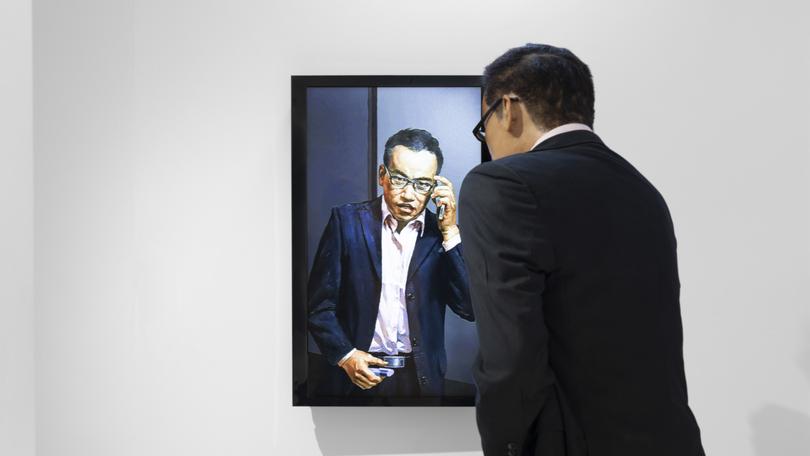
Transformation is a fundamental goal of art — base materials are transformed into things of beauty, dull objects become receptacles for daring ideas.
This process extends from the work to the audience itself. As the poet, Rilke said, the work of art commands us: “You must change your life.”
I’m not sure anyone will be changing their life after a visit to White Rabbit, Judith Neilson’s private gallery of contemporary Chinese art, but “transformation” is the theme of the show, Laozi’s Furnace.
Sign up to The Nightly's newsletters.
Get the first look at the digital newspaper, curated daily stories and breaking headlines delivered to your inbox.
By continuing you agree to our Terms and Privacy Policy.The specific reference is the 16th-century novel, Journey to the West, in which Sun Wukong, the Monkey King, survives 49 days in a furnace, losing many of the impurities of mortality and gaining a new superpower — the ability to recognise evil.
One envies him this power, which would save us all a lot of trouble. It’s tempting to apply the fable to China itself, with the furnace being ignited when the Communist Party came to power in 1949.
The following 75 years, currently being celebrated by the CCP top brass with speeches, receptions and banquets, have seen the Chinese people go through every kind of ordeal: forced collectivisation, war, famine, and the nightmare of the Cultural Revolution (c.1966-76).
Out of this furnace a new China has emerged, stronger and more prosperous than ever before.
The Chinese may live under an authoritarian regime that imposes strict controls on freedom of speech and behaviour, but according to a 2022 report jointly authored by the World Bank, since the mid-1980s more than 800 million people have been lifted out of poverty.
This statistic is worth bearing in mind when you hear anyone lamenting the country’s political system.
Being pragmatists, most Chinese might argue that it’s better to live comfortably in a central command economy than starve in a laissez-faire liberal democracy. Too many people retain memories of the desperate privations of the past.
The themes in Laozi’s Furnace range from Chinese folklore to contemporary consumer culture; from tactile engagements with natural materials to scathing political satire.
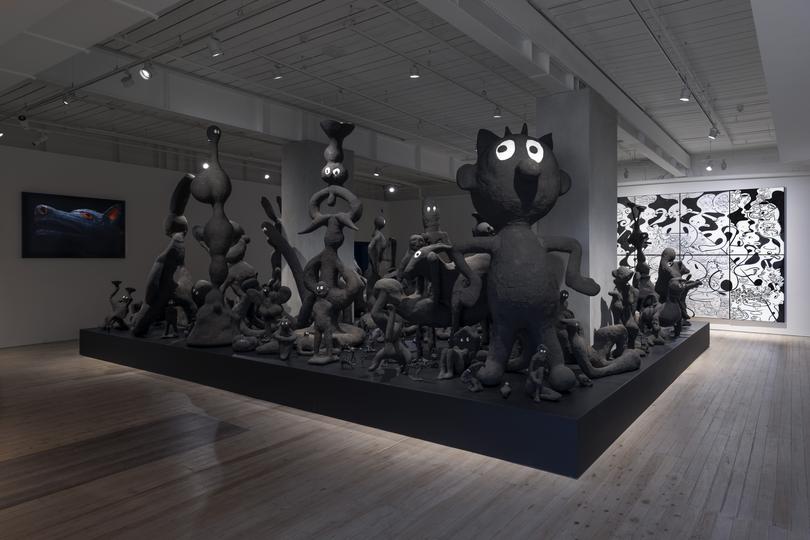
On the ground floor, Liu Jianhua’s celadon vessels with blood-red inserts are among the most familiar works on display.
The sight of these serene, beautiful bowls, apparently brimming with blood, sums up Chinese history and civilisation in a single image.
A larger piece called Fallen Leaves (2012-14) consists of 5000 leaves made from fine porcelain, although I didn’t stop to count them.
The transformation involved is not simply the painstaking act of turning ephemeral leaves into permanent ceramic sculptures, it’s a time-honoured allusion to our own mortality.
Ah Leon’s Memories of Elementary School (2009) takes an old wooden school desk and chair, copying them in stoneware. The detail is extraordinary, finding concrete forms for childhood memories.
Regular visitors to White Rabbit will have seen many pieces that reproduce everyday items in unusual materials, or multiply simple forms until they end in a vast, sprawling installation.
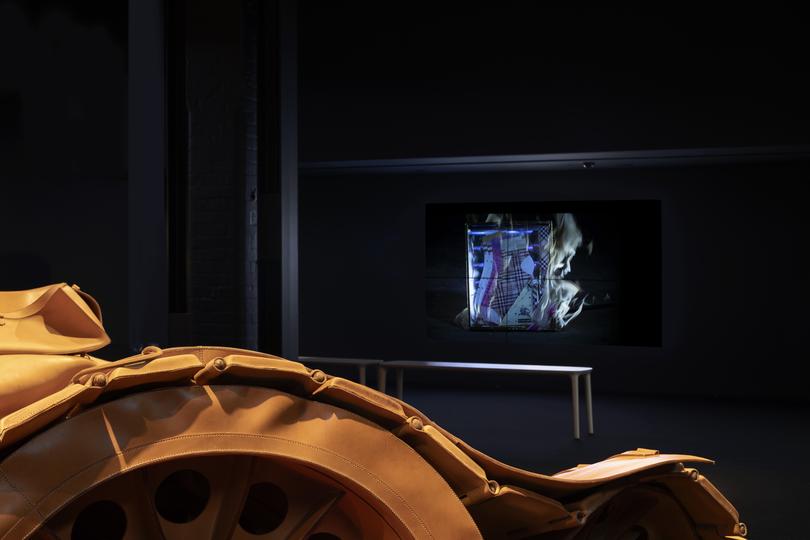
By far the largest work in this show is Lu Pingyuan’s Shadow of the Shadow (2021), which features 468 black, cartoonish sculptures with bright, staring eyes.
The inspiration was the French cartoon figure, Barbapapa — a pink blob that can adopt any form.
Lu has taken this as a licence to let his imagination run riot, creating a mass of hybrid animals and humanoids, large and small, crammed together on a platform of 8 X 9 metres.
These “shadow” creatures feel childish, with their crazy eyes, but also vaguely menacing. It’s as if they might spring to life, jump down off the platform and ravage their audience.
In He Xiangyu’s Tank Project (2011-13) the process is reversed, as a genuinely menacing object is rendered inert.
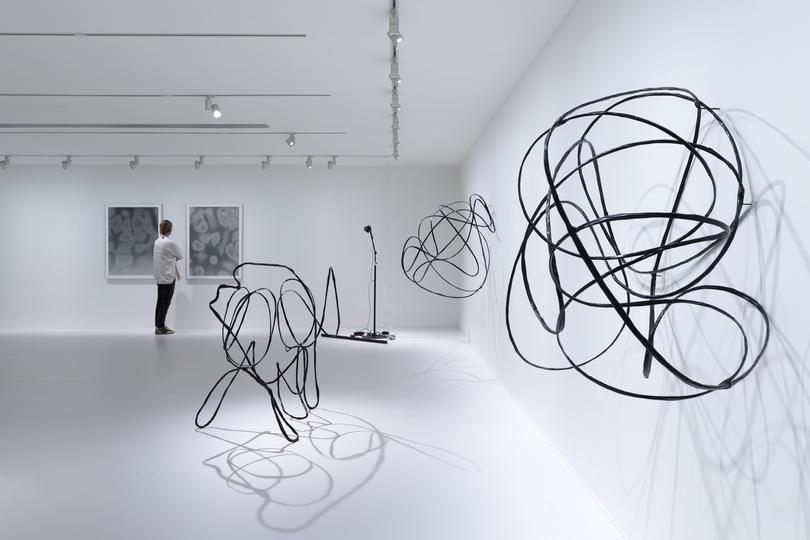
A full-scale, T34 tank has been reproduced in tan-coloured Italian leather by factory workers accustomed to sewing handbags.
This weapon of war lies in a flaccid heap on the gallery floor, wheels turning inwards, gun turret stretched out in front like a dead elephant’s trunk.
The fabrication is as exquisite as any designer handbag, but the overall impression is comical.
The only person endangered by this overgrown piece of leather goods is the artist himself, who allegedly had to sneak into an army base to measure an actual tank.
An even bigger risk is that many viewers will instantly associate the work with the famous footage of a student standing in front of a tank during the Tiananmen Square protests of June 1989.
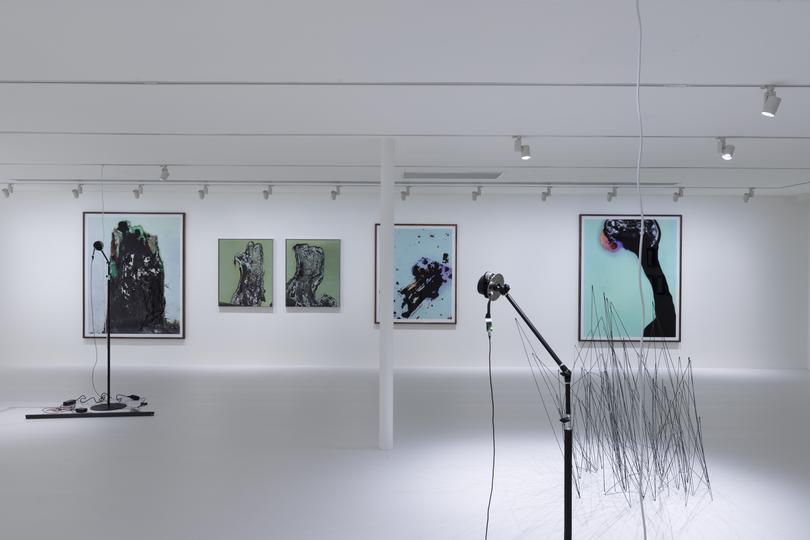
This is not a nostalgic moment for the Chinese government, so one can only wonder whether He’s Tank Project — originally shown at the Ullens Centre for Contemporary Art in Beijing in 2013 — would be permissible today in a more restrictive political environment.
While it’s getting harder for Chinese artists to make edgy work, it would be wrong to imagine they are in imminent danger of a police raid.
If a piece is deemed politically sensitive the first step is a process of friendly persuasion, encouraging an artist or dealer not to put it on display.
Most get the hint, until the censorship becomes internalised. There may be fewer artists in China today making the kind of radical statements that were commonplace 20 years ago, but this is a matter of caution rather than inclination.
He Xiangyu, like many provocative artists, has bases in both Beijing and Berlin, but he seems mild-mannered alongside the most extreme participant in this show.
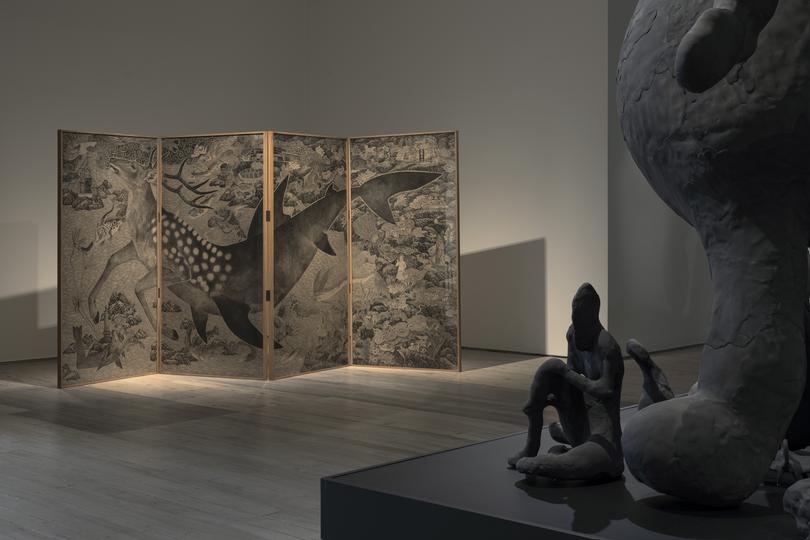
He Yunchan is known for his confronting performance pieces, and his Blooming Season: Snow in June (2015), a 12-minute video and a suite of 36 photographs, is one of the most genuinely repulsive experiences I’ve ever had in an art gallery.
On 4 June 2015, 26 years to the day after the tanks rolled into Tianamen Square, He lay naked on a table and asked a group of assistants to rub flower shapes into his skin with sandpaper.
As I can barely write this without an involuntary shudder, it would require a strong stomach to watch the entire video.
The photographs show He’s tortured body gradually healing, but it could hardly be called a happy ending.
In an age when critical engagement seems to be increasingly limited to whether one ‘likes’ something or not, the works in Laozi’s Furnace challenge the idea of art as mindless entertainment.
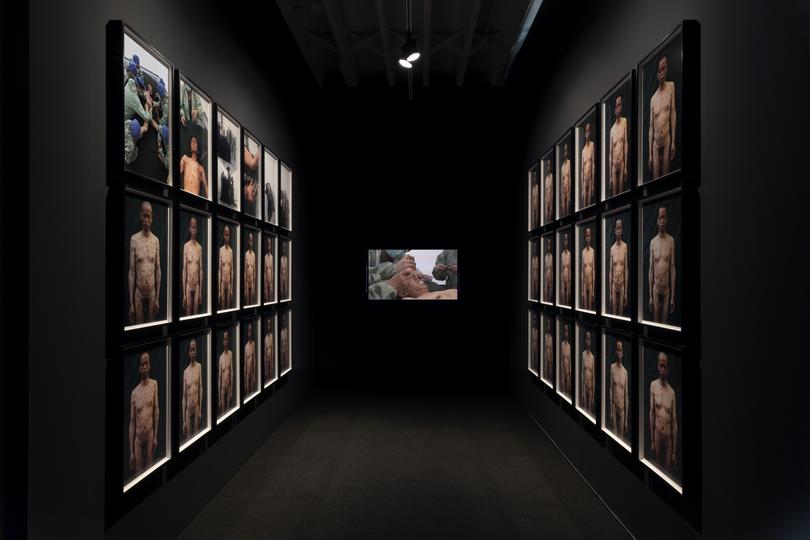
He’s body mutilation may be the most disturbing part of the show, but even Gong Xue’s stop-motion animation, Mr. Sea (2013), has an unsettling aspect, with a fairy tale told with porcelain figures gradually devolving into a horror story — as classic fairy tales tend to do.
If one were to compare this exhibition with most shows of ‘cutting-edge’ western art, what’s striking is that the Chinese are largely indifferent to the ideological platitudes and identity politics that allow artists to merely play at being rebels.
In a society in which basic freedoms are not to be taken for granted, art as a means of personal transformation can be a dangerous enough proposition.
Laozi’s Furnace
White Rabbit Gallery, Sydney
Until November 10
John McDonald is one of Australia’s best-known and respected art critics, having spent more than 40 years reviewing visual arts, fashion, film, journals, and books. McDonald was the senior art critic for The Sydney Morning Herald for 41 years and was also well known for his weekly film column in that time. He has also worked as the Head of Australian Art at the National Gallery of Australia.
